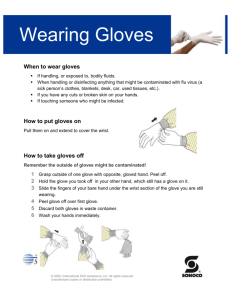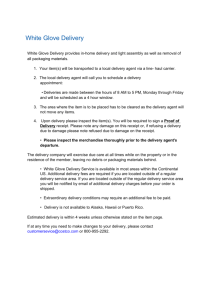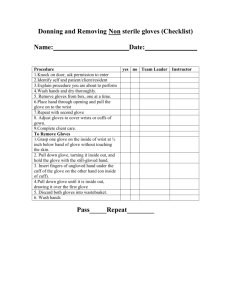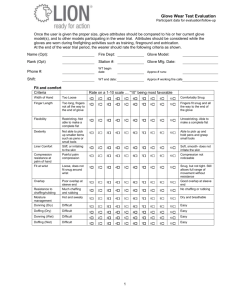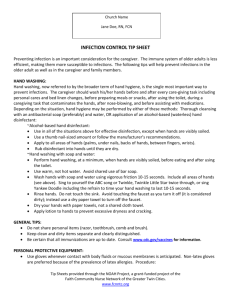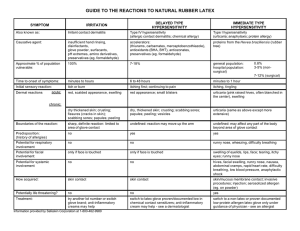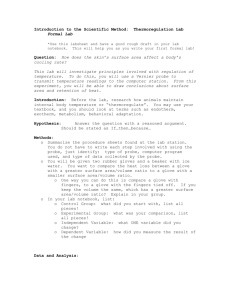Glove Selection
advertisement
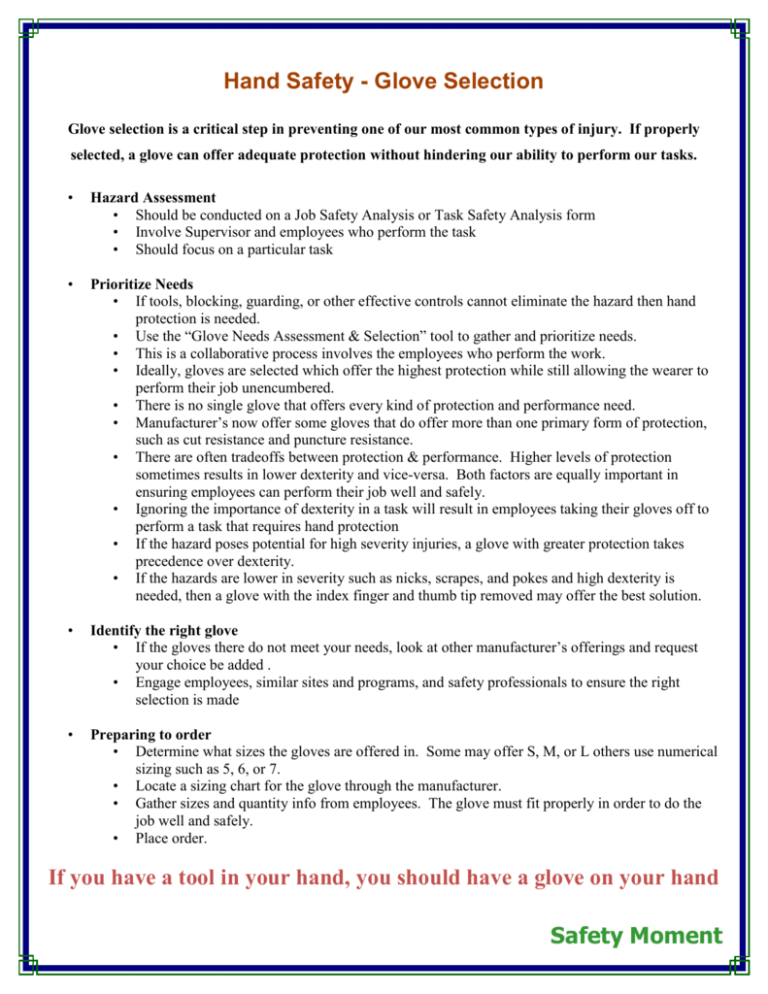
Hand Safety - Glove Selection Glove selection is a critical step in preventing one of our most common types of injury. If properly selected, a glove can offer adequate protection without hindering our ability to perform our tasks. • Hazard Assessment • Should be conducted on a Job Safety Analysis or Task Safety Analysis form • Involve Supervisor and employees who perform the task • Should focus on a particular task • Prioritize Needs • If tools, blocking, guarding, or other effective controls cannot eliminate the hazard then hand protection is needed. • Use the “Glove Needs Assessment & Selection” tool to gather and prioritize needs. • This is a collaborative process involves the employees who perform the work. • Ideally, gloves are selected which offer the highest protection while still allowing the wearer to perform their job unencumbered. • There is no single glove that offers every kind of protection and performance need. • Manufacturer’s now offer some gloves that do offer more than one primary form of protection, such as cut resistance and puncture resistance. • There are often tradeoffs between protection & performance. Higher levels of protection sometimes results in lower dexterity and vice-versa. Both factors are equally important in ensuring employees can perform their job well and safely. • Ignoring the importance of dexterity in a task will result in employees taking their gloves off to perform a task that requires hand protection • If the hazard poses potential for high severity injuries, a glove with greater protection takes precedence over dexterity. • If the hazards are lower in severity such as nicks, scrapes, and pokes and high dexterity is needed, then a glove with the index finger and thumb tip removed may offer the best solution. • Identify the right glove • If the gloves there do not meet your needs, look at other manufacturer’s offerings and request your choice be added . • Engage employees, similar sites and programs, and safety professionals to ensure the right selection is made • Preparing to order • Determine what sizes the gloves are offered in. Some may offer S, M, or L others use numerical sizing such as 5, 6, or 7. • Locate a sizing chart for the glove through the manufacturer. • Gather sizes and quantity info from employees. The glove must fit properly in order to do the job well and safely. • Place order. If you have a tool in your hand, you should have a glove on your hand Safety Moment
